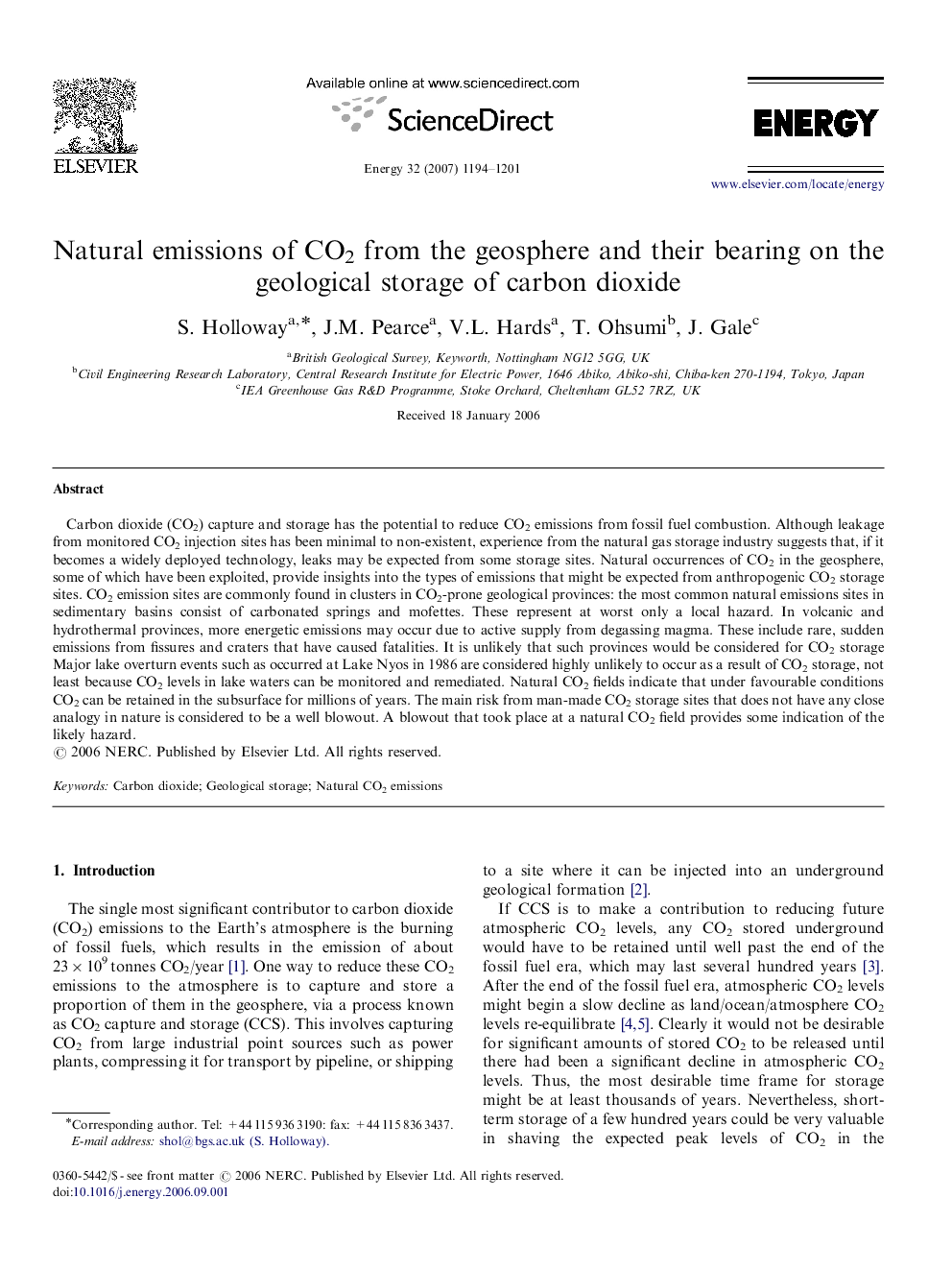| Article ID | Journal | Published Year | Pages | File Type |
|---|---|---|---|---|
| 1735825 | Energy | 2007 | 8 Pages |
Carbon dioxide (CO2) capture and storage has the potential to reduce CO2 emissions from fossil fuel combustion. Although leakage from monitored CO2 injection sites has been minimal to non-existent, experience from the natural gas storage industry suggests that, if it becomes a widely deployed technology, leaks may be expected from some storage sites. Natural occurrences of CO2 in the geosphere, some of which have been exploited, provide insights into the types of emissions that might be expected from anthropogenic CO2 storage sites. CO2 emission sites are commonly found in clusters in CO2-prone geological provinces: the most common natural emissions sites in sedimentary basins consist of carbonated springs and mofettes. These represent at worst only a local hazard. In volcanic and hydrothermal provinces, more energetic emissions may occur due to active supply from degassing magma. These include rare, sudden emissions from fissures and craters that have caused fatalities. It is unlikely that such provinces would be considered for CO2 storage Major lake overturn events such as occurred at Lake Nyos in 1986 are considered highly unlikely to occur as a result of CO2 storage, not least because CO2 levels in lake waters can be monitored and remediated. Natural CO2 fields indicate that under favourable conditions CO2 can be retained in the subsurface for millions of years. The main risk from man-made CO2 storage sites that does not have any close analogy in nature is considered to be a well blowout. A blowout that took place at a natural CO2 field provides some indication of the likely hazard.
